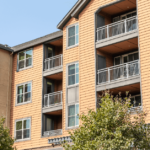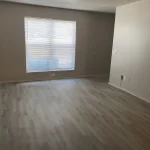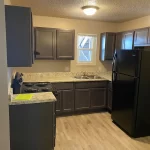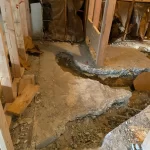When young people turn 18 and leave the foster care system, they face a world of adult responsibilities, often without a safety net. This process is called aging out of foster care, and it happens to thousands of teens every year. While some are lucky to have support, many don’t. They’re suddenly expected to find jobs, pay rent, manage bills, and stay afloat without the guidance most people rely on. Without help, they’re at high risk of becoming homeless foster youth, getting stuck in low-wage work, or even ending up in jail. This is where affordable housing for foster youth makes a real difference. It’s not just a roof—it’s the first step toward stability, opportunity, and a better life.
The Challenges of Aging Out Without Support
Leaving foster care should feel like a new beginning, but for many, it feels like falling off a cliff.
- No family safety net: Many young adults who’ve been in foster care don’t have relatives they can turn to for help or a place to stay.
- Limited work experience: Without steady jobs or support in school, it’s tough to secure housing.
- Expensive rent: Rental costs are sky-high, especially for someone who’s just starting.
- Lack of guidance: There’s no one to explain credit scores, leases, or job applications.
This makes housing for youth aging out of foster care especially important. Without it, the path to success gets harder.
How Affordable Housing Supports Former Foster Youth
Having a safe place to live is the foundation for everything else—school, work, and mental health. Here’s how affordable housing for foster youth creates that foundation:
🏠 Transitional housing for former foster kids
These are short-term programs designed to help young adults adjust to independence. Residents learn life skills, save money, and prepare for permanent housing.
🧩 Supportive housing for young adults
This type of housing combines a place to live with services like counseling, job training, and health care. It helps people get back on their feet without feeling overwhelmed.
💰 Post-foster care housing programs
These include rental assistance, housing vouchers, and partnerships with local nonprofits or state foster care transition programs. They lower the cost of living while teaching budgeting and responsibility.
All of these options provide more than a bed—they offer foster youth housing assistance that helps build confidence, stability, and hope.
Success Stories and Long-Term Impact
Affordable housing isn’t just a roof overhead, it’s the turning point that helps former foster youth build stable, successful lives.
Success Story: Tysaiah’s Fresh Start
When Tysaiah Cooper aged out of foster care at 21, he faced the threat of homelessness. Thanks to a housing program in Los Angeles, he received a safe place to live—and a second chance. With stable housing and support services, Tysaiah found the confidence to move forward.
His story proves that with the right help, foster youth can thrive and build bright, independent futures. When a young person has access to affordable housing for foster youth, everything starts to change:
- They stay in school longer
- They avoid the foster care to prison pipeline
- They get jobs and keep them
- They’re less likely to experience long-term poverty
That’s because affordable housing solutions let youth focus on goals instead of survival. They’re not just surviving—they’re finally independent living for foster youth in a way that builds confidence and self-worth.
These programs also reduce strain on shelters, prisons, and hospitals. When youth have youth housing security, it lifts entire communities.
The Role of Developers and Communities
You can’t build a future without a solid foundation. That’s why construction companies, housing agencies, and policymakers need to focus on housing for vulnerable populations, especially those aging out of foster care. By building subsidized housing for young adults, developers can play a key role in giving these individuals a real shot at life.
Support from local leaders and community members is just as important. Whether it’s donating, advocating, or simply spreading the word, we all have a role in helping homeless foster youth find hope and a home.
Organizations like Midtown Builders help lead the way by supporting affordable housing initiatives for underserved groups. With the right planning, every community can become a place where post-foster care housing programs thrive.
A Safe Home Shouldn’t Be a Luxury
Affordable housing for foster youth is more than just four walls and a roof. It’s the difference between a life of struggle and one of opportunity. Through transitional housing for former foster kids, supportive housing for young adults, and strong foster care transition programs, young people can build real futures. When communities invest in housing for youth aging out of foster care, they reduce poverty, prevent homelessness, and help stop the foster care to prison pipeline. Everyone deserves a shot at a stable, happy life—and it starts with a place to call home.
To support or learn more about how housing developments are helping youth transition to independent adulthood, contact us, and let’s make affordable, stable housing a reality for all.










